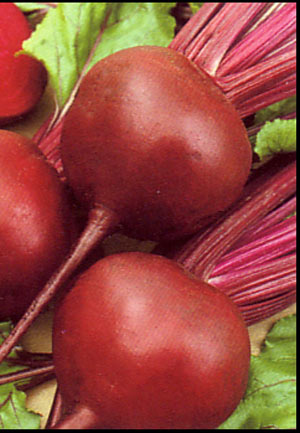|
|
Soilborne fungal diseases threaten the viability of the Australian processing beetroot industry. The disease problems have been exacerbated in recent years because crops are now grown virtually year round, and under environmental conditions that favour disease outbreaks. The long beetroot growing-window has reduced the opportunity for farmers to rotate out of beetroot and if rotations are completed, they are generally only short, which further increases the disease problems. The Lockyer and Fassifern valleys of south-east Queensland supply approximately 90% of Australian processed beetroot. There are many factors that stand in the way of profitable, efficient production but an important one for this industry is crop establishment problems and quality reductions due to soil-borne diseases. In recent years soil-borne diseases (Pythium, Rhizoctonia and Aphanomyces) have been reported to cause substantial yield and quality reductions, particularly in crops grown at the extremities of the growing season. These pathogens can result in poor stand establishment and may give rise to poor quality, misshapen beets This report summarises the results of a four-year study investigating yield and quality decline in Australian processing beetroot crops. It provides information on the identification and management of soil-borne fungal diseases of beetroot and identifies prospective beetroot varieties that may be used as alternatives to the varieties currently grown by the industry.
Summary : The soilborne fungal diseases currently jeopardising the Australian beetroot industry are not unique to Australia. The fundamental issue that has lead to an increase in prevalence of soil-borne diseases in this industry has been the extension of the growing window into periods of high disease risk. As a consequence of this extended growing window, growers, particularly those with smaller farms, have less opportunity to rotate out of beetroot, or if they are able to rotate it is only for short periods. The result is a continual increase in the quantity of disease inoculum in the beet soils and heavy losses due to disease, particularly in crops planted during periods of high disease risk. This project has identified several tactics that will assist the beetroot industry to better manage its soilborne diseases and improve the quality of its product.
Acknowledgements : I would like to extend sincere thanks to the project team members, in particular, Scott Boreel, Vicki Hamilton, Peter Scholl, Eric Coleman and Bob Davis for their hard-work and dedication to this project. Assistance from Peter Case, Gerry Macmanus, Sandra Dennien, Carolyn Lee, Russell McCrystal, Belinda Bowe and Amanda Love in planting, harvesting and assessing field trials is also gratefully acknowledged. I also wish to thank Craig Henderson for developing the original project proposal for submission to HAL. The work done by Dr Paul Scott (The University of Queensland) in identifying the species of pathogenic Pythium isolates added an additional dimension to the work which contributed enormously to the project outcomes. We are extremely grateful to Paul for his efforts and his willingness to collaborate with us. Considerable in-kind contributions were provided from seed and chemical companies. We are thankful to Barry Donahoe (Syngenta), Difang Chen (Alf Christianson Seed Co.), David Commens (SPS), Tim Lewis and Andrew Henderson (Henderson Seeds), Wayne Hoey (Le Froy Valley), Michael Sippel (Yates), Paul Hesseltine (Bejo), and Ole Johansen (Daehnfeldt), for their contributions. We also thank Rob Vitelli (Bayer), Chris Stuart (Sumitomo Australia Ltd), Patrick Press (Sumitomo Chemical Australia P/L), Tanya Middeldorp (Uniroyal Chemical), Natalie Rose (Syngenta Crop Protection P/L) and Matthew Gilmore (Barmac Industries) for supplying us with fungicides to trial. John Hunt and Rob Stanic (Agrimm P/L), Steve Capeness (Vermitech), Alan Mudford (Wrightsons Seeds), Richard Armstrong (Enviroganics P/L), Peter Thompson (Terra Firma Fertilisers) and Peter Stewart (Pacific Seeds) all provided in-kind contributions for the organic amendments and crop rotation trial, and their contributions are appreciated. We thank Shane Litzow for taking the time to fix his metham applicator and fumigating the site for the organic amendments and crop rotation trial. The beetroot growers of the Lockyer Valley contributed enormously to this work by providing us with sites on their farms to establish field trials, and by maintaining the trials from planting through until harvest. Specifically we wish to thank Merv Neumann, Peter Voight, Linton Brimblecombe, Tim Pocock, Glenn Lerch, Ashley Zelinski and Peter Lerch. This project has been facilitated by Queensland State Government and Horticulture Australia Limited (HAL) in partnership with AUSVEG and has been funded by the National Vegetable Research and Development Levy and Golden Circle P/L. The Australian Government provides matched funding for all HALs R&D activities. |
||||||||||||
|

